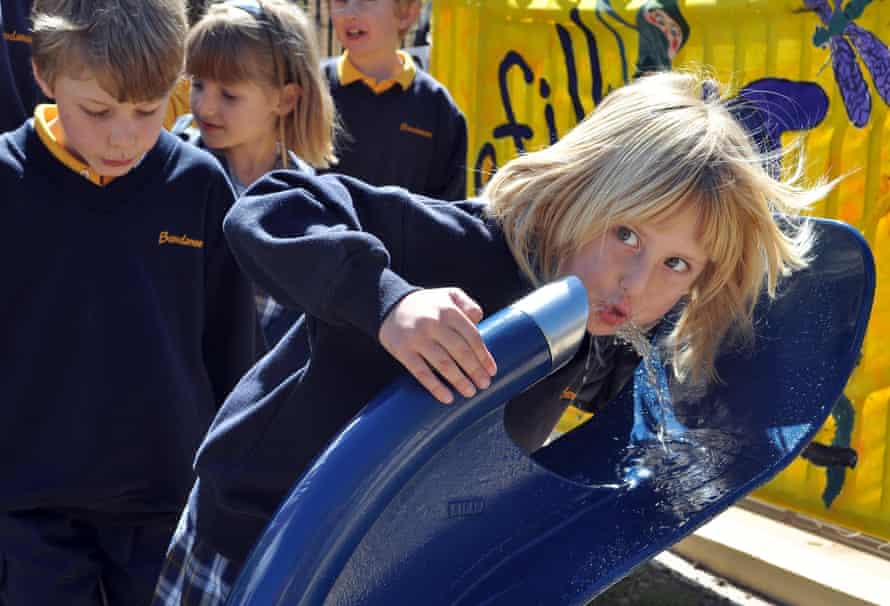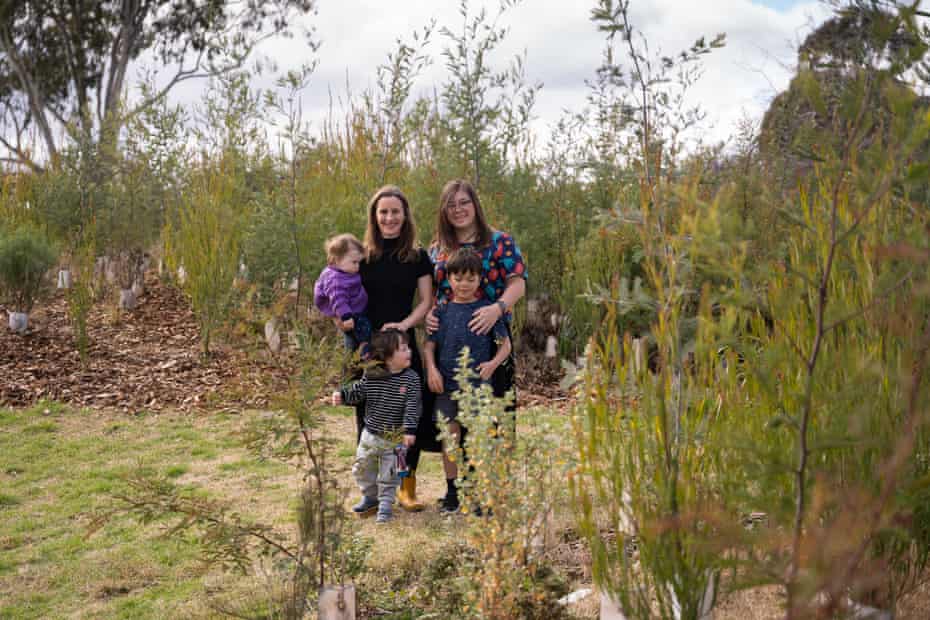‘Good ideas, good work and good luck’: Australian grassroots campaigners on how they got it done
From town hall meetings to QR codes and crowdfunding, three environmental campaigners share the practical tips that helped make their work effective

If you’ve ever signed a petition, written a cranky letter to your local MP or joined a protest there’s a good chance you’ve been part of an grassroots campaign, but what does it take to actually start one? How do you bring people together to solve a common problem and how do you increase your chances of success?
We asked some of the people behind three successful campaigns for the practical advice they learned along the way.
The small-town organiser
In 2009 the small New South Wales town of Bundanoon was streets ahead of today’s single-use plastic bans when it became the world’s first municipality to refuse to sell bottled water.

Local residents overwhelmingly supported the ban at a town meeting, voting 354 to one, cementing their long-term opposition to a multinational company’s bid to extract 50m litres of water a year from a nearby bore.
The “Bundy on Tap” campaign became international news, which local businessman Huw Kingston puts down to “a combination of good ideas, good work and good luck”.
At the time, Kingston ran the town’s bike shop and cafe. He floated the idea of a ban in a letter to the local paper, suggesting it was hypocritical to oppose water mining while selling bottled water. The idea caught on and a committee was formed to investigate.
Kingston says education about the environmental impact of bottled water was the key to getting everyone on side, including businesses and local event organisers, although they faced stiff opposition.
He says arguing respectfully with the industry helped their cause: “It was good to do a lot of debates on talkback radio and help them dig themselves in a bigger and bigger hole.”
What begin as a fairly simple plan took off once the world noticed: “We wanted to make a point that we didn’t want the water extraction plant. We would get rid of the product, put a few signs up in town and get a bit of extra notoriety.”
However, the international media attention meant that companies wanting to be on the winning side supplied Bundanoon with free reusable water bottles and public water fountains.

Kingston wouldn’t advise others to attempt a complete ban: “We were able to do it in a small town with 15 or so businesses, but you couldn’t do it elsewhere without legislation. The main game is bringing back the water fountain.”
“We wanted to give people a choice. They can go into a shop and waste their money on a plastic bottle of water, or they can go on to the street and fill up from a fountain or fill up at a cafe.”
The social strategist
Australian Capital Territory landscape architect Edwina Robinson’s campaign to establish “a climate-cooling microforest in every urban hotspot in Australia” was sparked in 2019, during Australia’s hottest, driest summer on record: “I wanted to do something about it, so I came up with the idea of creating microforests, which are dense pockets of climate-ready native vegetation that cool the landscape, provide habitat, enhance community wellbeing and give hope for the future.”
Robinson’s idea became reality when she participated in a social enterprise incubator program and launched a StartSomeGood crowdfunding campaign. She began emailing her network of friends and environmental design colleagues and posting on her Facebook page and LinkedIn – in 30 days she had raised $23,000 to establish the ACT’s first microforest in a “dusty, weedy” public park in Downer.

Robinson worked through the paperwork from four government departments to get permission and motivated hundreds of volunteers to join four community working bees to build 450 sq metres of garden beds.
A carer group and planting volunteers were sourced from a mailing list compiled during community consultations, as well as through local publicity: “We advertised in the local newsletter and I put events on Eventbrite and linked people through to my social media.”
The first microforest quickly inspired two others. Purdie Bowden and Elizabeth Adcock from the neighbouring suburb of Watson contacted Robinson, wanting to do the same thing. Robinson made introductions, creating a new microforest powerhouse. The trio quickly set up a dedicated website and Facebook page and launched their own crowdfunding campaign. They raised $53,000 in 40 days with the help of an extensive social network, including school families, and QR code on the website that linked to the fundraiser.
Robinson said she met regularly with the Watson team to share tips and resources then, once the Downer microforest was established, she documented the whole project to share with them and any other interested groups.
“We say to people, they don’t have to be experts because we team you up with the experts, no matter where you live. We’re inviting people to do something great in their community and I think people really like that.”
The persistent letter-writer
A large bunch of balloons released 300km away is the last thing you expect to find on a beach walk. But when Karen Joynes, a community environmental activist from the south coast of New South Wales, found 14 deflating balloons branded with logos from Albury city council and a soccer team, it only took her a few phone calls to find out they had drifted from the border town overnight: “I called council and they confirmed that a bunch of balloons had been released at the game the day before. I followed up with the Bureau of Meteorology and they confirmed that it was possible.”
The 2014 discovery prompted Joynes to start tallying the numbers of balloons washing up on her local, remote beach. She says balloons are one of the most deadly forms of litter for seabirds and marine life, even when advertised as “biodegradable”.
Joynes described these risks to sea life to a local shopkeeper who started selling helium balloons in 2016. She begged the retailer to ask her customers not to release the balloons. When that request was refused, Joynes decided she would have to do something herself. She connected with two other women, Victorian Amy Motherwell and Western Australian Lisa Hills, to found No Balloon Release Australia and launch a petition asking the federal government to ban helium balloon releases, and the use of helium to inflate balloons.
Joynes writes to every new state, territory or federal environmental minister about the environmental dangers of balloon releases, and pens new letters every time there’s “a mass balloon release or some new research comes out, saying, ‘Here’s another example of why we need to take action’.” She also writes to public servants: “It’s really useful to contact those people because a lot of them are involved in policy and can tell me this issue is coming up repeatedly, and they can make recommendations to the minister.”
She says existing state litter laws are rarely enforced for balloon releases: “A lot of the time the releases are in memory of someone who’s died tragically, so it’s really hard to fine people in that situation.”
After five years of campaigning, in July 2021 Joyce celebrated Victoria becoming the first Australian state to outlaw balloon release: “We’re hoping it’s a tipping point, that other states will see that it can be done and it’s been well received.”